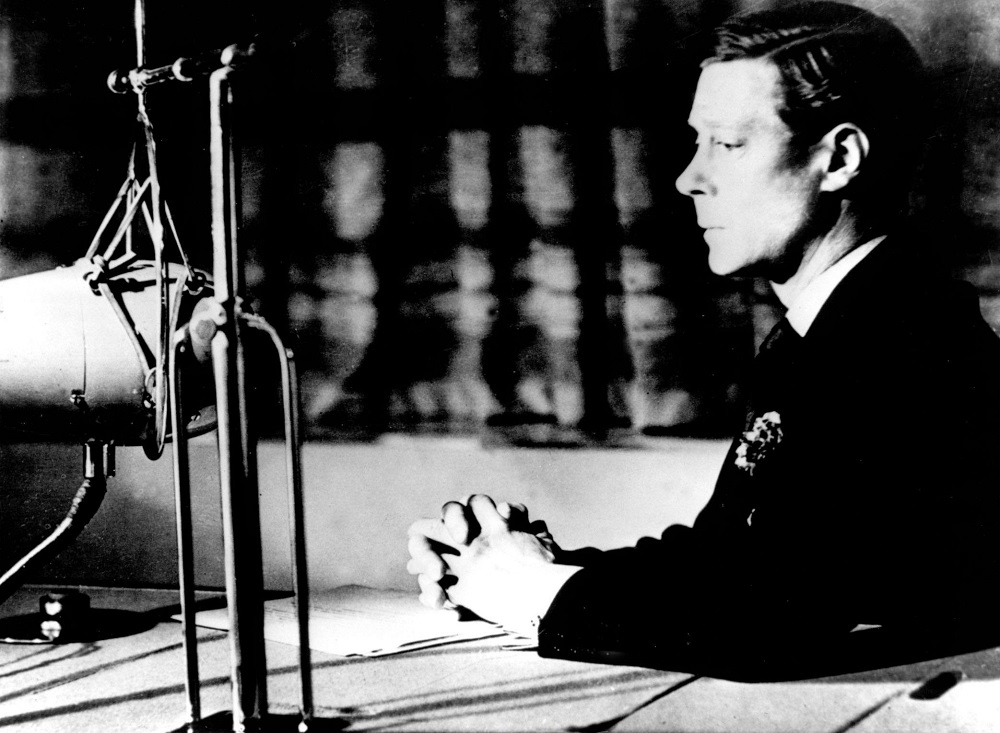This month in history: Edward VIII abdication crisis
On 10 December 1936, Edward VIII signed his written abdication notices. As part of our ‘This month in history’ series, we look at one of the shortest-reigning monarchs in British history.

The birth of Edward Albert Christian George Andrew Patrick David
Edward Albert Christian George Andrew Patrick David was born at White Lodge, Richmond on 23 June 1894 (Gazette issue 26525). Known to his close friends and family as just ‘David’, he was born during the reign of his great-grandmother Queen Victoria and was the eldest son of the Duke and Duchess of York (later King George V and Queen Mary). At the time of his birth, Prince Edward was third in the line of succession to the throne.
Following the deaths of his great-grandmother in January 1901 (Gazette issue 27270) and his grandfather Edward VII in May 1910, Edward’s father became King George V (Gazette issue 28365). Edward was now heir apparent and a month later was created Prince of Wales and Earl of Chester on his 16th birthday (Gazette issue 28387).
The Prince of Wales and Wallis Simpson
During the 1920s and 1930s, the Prince of Wales gained a reputation among some of his peers for recklessness following a series of affairs with married women. It is even thought that George V himself was reluctant to see Edward inherit the Crown due to concerns.
One such relationship was with American divorcée Wallis Simpson. Edward was introduced to Simpson through her close friend Lady Furness, the American wife of a British peer whom the Prince was widely reported to be seeing. Simpson had divorced her first husband, U.S. naval officer Win Spencer, in 1927. Her second husband, Ernest Simpson, was a British-American businessman. It is widely accepted that she and the Prince of Wales became lovers in January 1934 while Lady Furness travelled abroad.
Edward's relationship with Simpson did little to strengthen his relationship with his father. Despite the King and Queen meeting Simpson at Buckingham Palace in 1935, they later refused to receive her. Edward's affair with an American divorcée led to such concern among government and establishment figures that the couple were secretly followed by members of the Metropolitan Police Special Branch.
The reign of Edward VIII
Edward’s father George V died in Sandringham House, Norfolk on 20 January 1936 (Gazette issue 34245). The Prince of Wales was now King Edward VIII. From the outset, the new king showed disregard for certain court protocols and customs of the reigning monarch. The day after his father’s demise, for example, with Simpson by his side, he broke with tradition by watching the proclamation of his own accession from a window of St James's Palace.
During his short reign, Edward VIII was also accused in some government circles of interfering in political matters, following comments made on a tour in South Wales. At Easter, instead of moving the Court to Windsor Castle, as was customary, the King also stayed at his home, Fort Belvedere, and entertained friends.
On 16 November, Edward invited then Prime Minister Stanley Baldwin to Buckingham Palace to express his desire to marry Simpson once her divorce proceedings with Ernest Simpson were concluded. Baldwin informed the King that his Cabinet, as well as other Dominion governments, would be opposed to the marriage. This was not only as it was politically and socially unacceptable for a prospective queen consort to have two living ex-husbands, but also because of Edward's status as the titular head of the Church of England, which at the time disapproved of remarriage if a former spouse was still living.
The meeting with Baldwin left the King with little option. He could not marry Wallis Simpson and remain on the throne without causing significant political fallout and immeasurable damage to the reputation of the royal family.
The abdication of King Edward VIII
Witnessed by his three younger brothers, on 10 December 1936, Edward VIII signed the abdication papers. In his abdication speech the next day, Edward stated: ‘I have found it impossible to carry the heavy burden of responsibility and to discharge my duties as King as I would wish to do without the help and support of the woman I love.’
The Gazette reported the abdication in an Extraordinary Edition with the words: ‘His former Majesty King Edward the Eighth did declare His irrevocable Determination to renounce the Throne for Himself and His Descendants and the said Instrument of Abdication has now taken effect’ (Gazette issue 34349). His younger brother ‘Bertie’, the Duke of York, was now King George VI.
Following the abdication at the accession meeting of the Privy Council of the United Kingdom, George VI announced he was to make his brother the Duke of Windsor with the style of Royal Highness (Gazette issue 34349). Details of George VI’s proclamation were published in The Gazette on 1 January 1937 (Gazette issue 34356).
With a reign of 326 days, Edward VIII is one of the shortest-reigning monarchs in British history. He went on to marry Wallis Simpson in France on 3 June 1937, after her second divorce became final. They remained married until his death on 28 May 1972.
See also
This month in history: the Boston Tea Party
Image: Keystone Press / Alamy Stock Photo
Publication date: 3 December 2019
